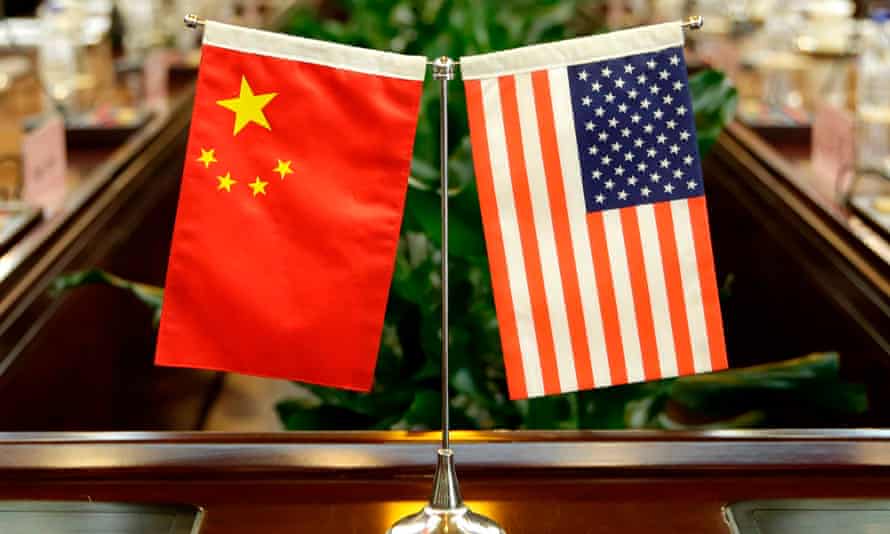Joe Biden’s decision to expand the US investigation into the origins of the Covid-19 pandemic, with one intelligence agency leaning towards the theory that it escaped from a Wuhan laboratory, has opened a new divide in his administration’s already tense relationship with China.
Biden said on Thursday that he would publish the results of the 90-day inquiry, which has made a priority for the intelligence agencies. The move represents a dramatic turnaround from the administration’s policy until now of leaving the investigation to the World Health Organization.
The US on Thursday called on the WHO to carry out a second phase of its investigation into the origins of the coronavirus, with independent experts given full access to original data and samples in China.
“It is critical that China provides independent experts full access to complete, original data and samples relevant to understanding the source of the virus and the early stages of the pandemic,” said the US mission to the UN in Geneva.
Beijing has reacted angrily, portraying Biden’s announcement as part of a broader geopolitical struggle. The Chinese government questioned Washington’s motives and railed against the “notorious track record” of US intelligence in the lead-up to the 2003 war in Iraq.
However, as Biden acknowledged, the US intelligence community is split over the likely origins of the pandemic. The Office of the Director of National Intelligence (ODNI) issued a statement on Thursday, admitting the disagreement, and the continuing lack of certainty over the facts.
“The US intelligence community does not know exactly where, when, or how the Covid-19 virus was transmitted initially but has coalesced around two likely scenarios: either it emerged naturally from human contact with infected animals or it was a laboratory accident,” the statement said.
“While two elements of the IC lean toward the former scenario and one leans more toward the latter – each with low or moderate confidence – the majority of elements within the IC do not believe there is sufficient information to assess one to be more likely than the other.”
The statement concluded: “The IC continues to examine all available evidence, consider different perspectives, and aggressively collect and analyze new information to identify the virus’s origins.”
The virus was first detected in the Chinese city of Wuhan in late 2019 and has since spread around the world, killing almost 3.5 million people. The broad consensus among scientific experts remains that the most likely explanation is that Covid-19 jumped to humans from an animal host, in a natural event.
On Thursday, the Chinese foreign ministry spokesperson, Zhao Lijian, said it was “extremely unlikely” the virus had come from a laboratory in Wuhan, pointing to the findings of a March report by a World Health Organization mission.
Zhao said: “[The US’s] one aim is to use the pandemic to pursue stigmatisation and political manipulation to shift the blame. They are being disrespectful to science, irresponsible to people’s lives, and counterproductive to concerted global efforts to fight the virus.”
Invoking memories of the 2003 Iraq war and the unfounded intelligence used to justify the US-led invasion, Zhao said “the notorious track record of the US intelligence community has long been known to the world”.
On Wednesday, Biden gave the US intelligence agencies 90 days to report to him in an effort to reach a “definitive conclusion” about the origins of the coronavirus.
He directed US national laboratories to assist with the investigation and called on China to cooperate with international inquiries into the origins of the pandemic. Biden said he had also asked the intelligence community to keep Congress informed of its work on the matter.
“The United States will also keep working with like-minded partners around the world to press China to participate in a full, transparent, evidence-based international investigation and to provide access to all relevant data and evidence,” he said.
Rumours that Sars-CoV-2 may have emerged from a Chinese laboratorybegan circulating shortly after China reported the first cases early last year. Although it was dismissed as a fringe theory at the time, Donald Trump, his secretary of state, Mike Pompeo, and a Republican senator, Tom Cotton of Arkansas, promoted it as the death toll began to rise in the last months of the Trump administration.
The theory was dismissed by most scientists, and in February an international expert mission to China on behalf of the WHO called the lab leak theory “extremely unlikely”.
Peter Ben Embarek, the head of the WHO mission, said at the time that work to identify the origins of Covid-19 pointed to a “natural reservoir” in bats, but that it was “unlikely” this occurred in Wuhan.
However, the organisation’s director general, Tedros Adhanom Ghebreyesus, said in March that “all hypotheses remain on the table” after 14 countries, including the US and UK, made a joint statement to express concerns over the WHO team’s conclusions.
On Sunday, the Wall Street Journal, citing “previously undisclosed” US intelligence, reported that three members of staff at a key virus laboratory in Wuhan had become sick with Covid-like symptoms and were taken to hospital before the first Covid patient was recorded in early December 2019.
Citing people briefed on the intelligence, CNN reported on Monday that the intelligence community “still does not know what the researchers were actually sick with”. “At the end of the day, there is still nothing definitive,” one of those who has seen the intelligence told CNN.
The Wall Street Journal report came on the eve of a key meeting of the WHO’s decision-making body, which was expected to discuss in detail the next phase of an investigation into the origins of Covid-19.
Beijing vehemently denied the report, calling it “completely untrue”. On Thursday Zhao also proposed China’s own theory, without evidence, that the virus may have originated from a US army base in Maryland.

